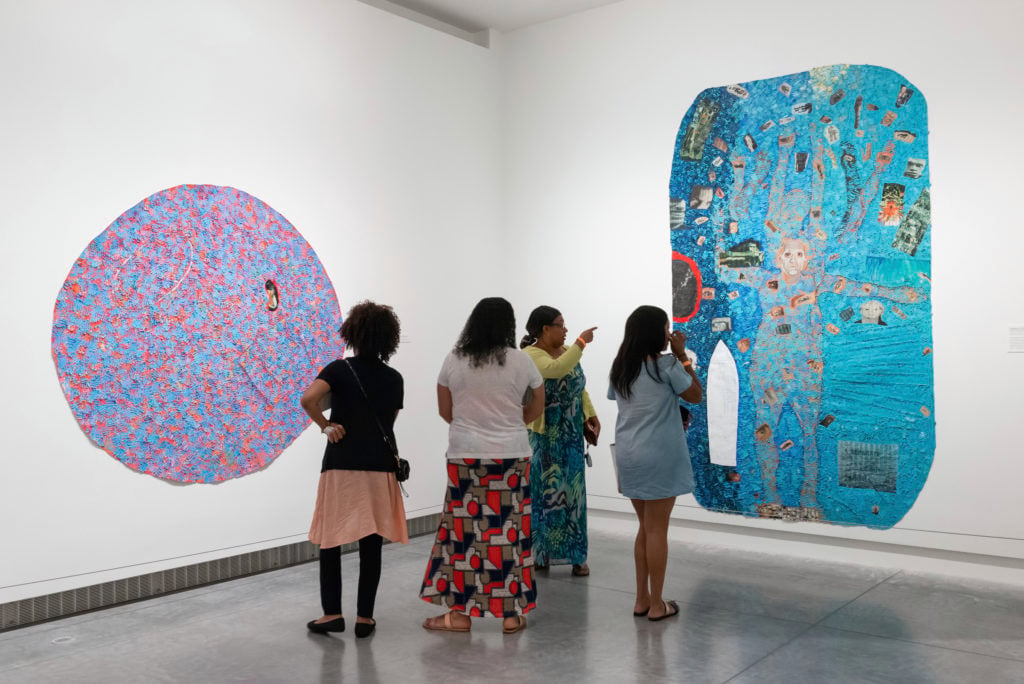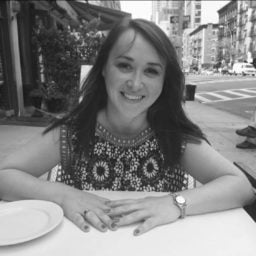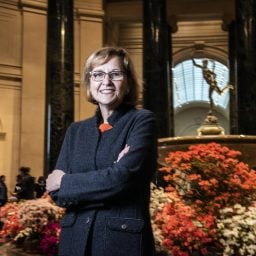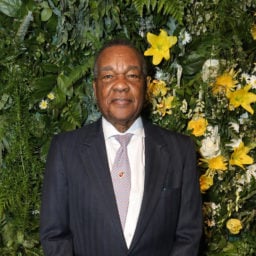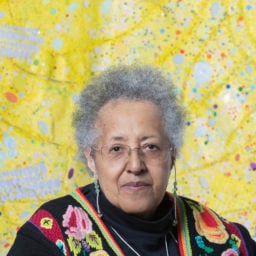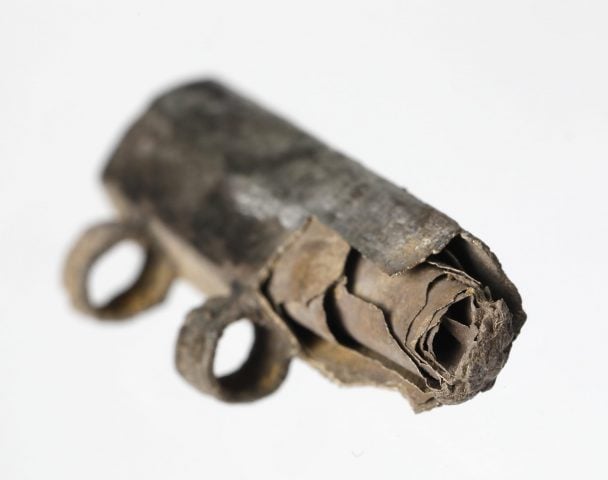This story is a collaboration between artnet News and In Other Words.
As a child growing up in Alabama in the 1950s and ‘60s, Jack Whitten was not permitted inside his segregated local museum in Birmingham. Now, the late artist is the subject of a major exhibition at the Met Breuer in New York. Its title, aptly, is “Odyssey: Jack Whitten Sculpture 1963–2017” (on view through December 2).
As recently as 1992, a proposed tour of the Whitney Museum of American Art’s Jean-Michel Basquiat retrospective was canceled when no other museums came forward to take it. Last spring, one of Basquiat’s paintings sold for $110.5 million, becoming the most expensive work by an American artist ever sold at auction.
Such landmark moments make it easy to assume that there has been a fundamental shift in the way the work of African American artists is valued. But since 2008, just 2.37 percent of all acquisitions and gifts and 7.6 percent of all exhibitions at 30 prominent American museums have been of work by African American artists, according to a joint investigation by In Other Words and artnet News.
Our data, coupled with conversations with more than 30 prominent curators, collectors, dealers, museum directors, academics, and philanthropists, reveals that progress is much more recent—and benefits far fewer artists—than high-profile exceptions might lead one to believe.
“When they look at the totality, people will realize they have a lot of work to do,” says Naima Keith, the deputy director and chief curator of the California African American Museum.
The Most Compelling Art of Our Time
These figures are particularly sobering at a time when African Americans comprise more than 12 percent of the US population and are creating some the most visible and compelling art of our time: from Kehinde Wiley and Amy Sherald’s wildly popular portraits of Barack and Michelle Obama to the towering public sculptures by Martin Puryear (who is set to become the second consecutive African American artist to represent the US at the Venice Biennale), not to mention the paintings by Kerry James Marshall that recently toured the country in a blockbuster retrospective.
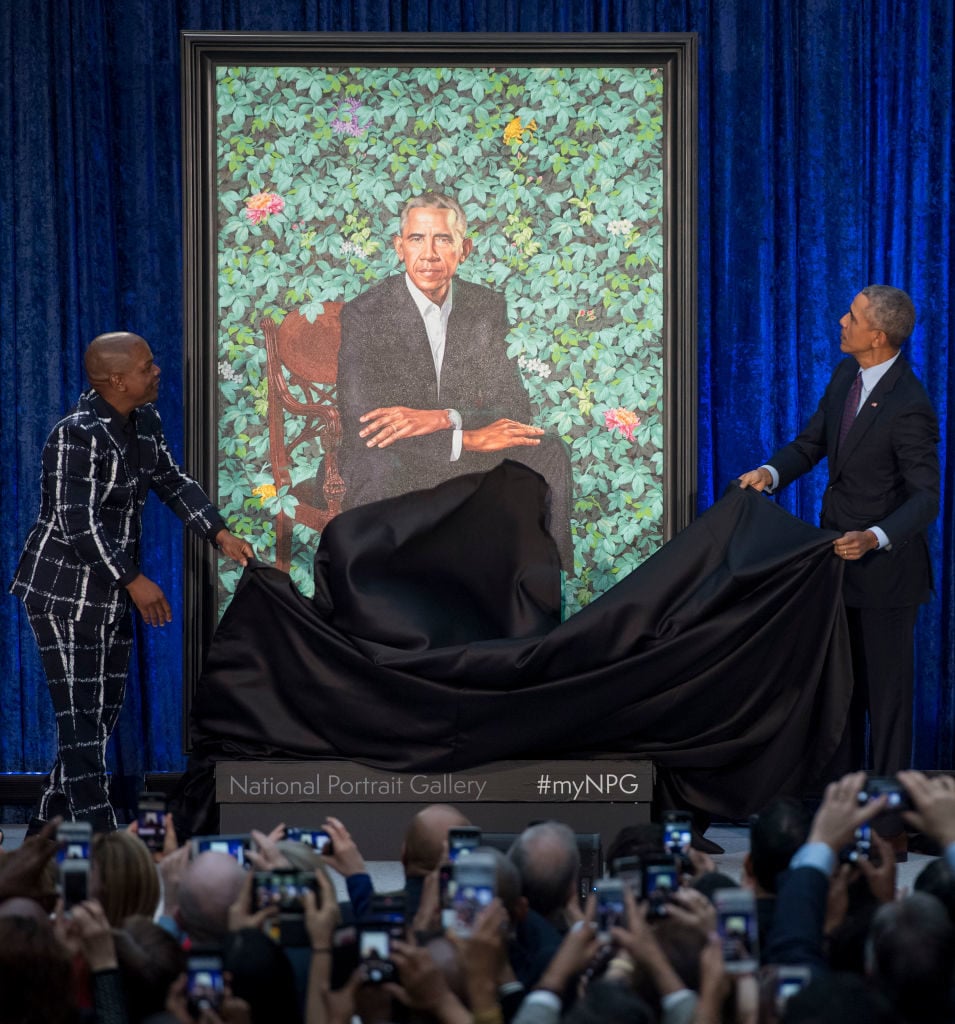
Kehinde Wiley and Barack Obama at the Smithsonian’s National Portrait Gallery in Washington, DC. Photo: Saul Loeb/AFP/Getty Images.
This fall, several critically acclaimed traveling exhibitions focus on the work of an older generation of African American artists, including “Soul of a Nation: Art in the Age of Black Power” at the Brooklyn Museum, New York (on view through February 3, 2019), “Howardena Pindell: What Remains To Be Seen” at the Virginia Museum of Fine Arts (through November 25), and “Charles White: A Retrospective” at the Museum of Modern Art in New York (October 7–January 13, 2019).
“If you deal with contemporary art, it is self-evident that many of the most interesting artists are African American,” says MoMA’s director Glenn Lowry. “And you realize that there were always important African American artists, even if they were not as visible to museums as they should have been. So then you need to address that as well.”
The Numbers
There are signs of change. Last year, the number of solo and thematic exhibitions focusing on the work of African American artists jumped almost 66 percent (to 63 shows, from 38 in 2016). Just nine months into 2018, the combined number of works by African American artists acquired by museums (439 total, so far) is on track to become a 10-year record.
Nonetheless, this shift is extraordinarily recent. Over the past decade, purchases and gifts of work by African American artists accounted for a mere 2.4 percent of all acquisitions by the 30 museums we surveyed. Even starker is the fact that at four of these museums, this work accounted for less than one percent of all acquisitions.
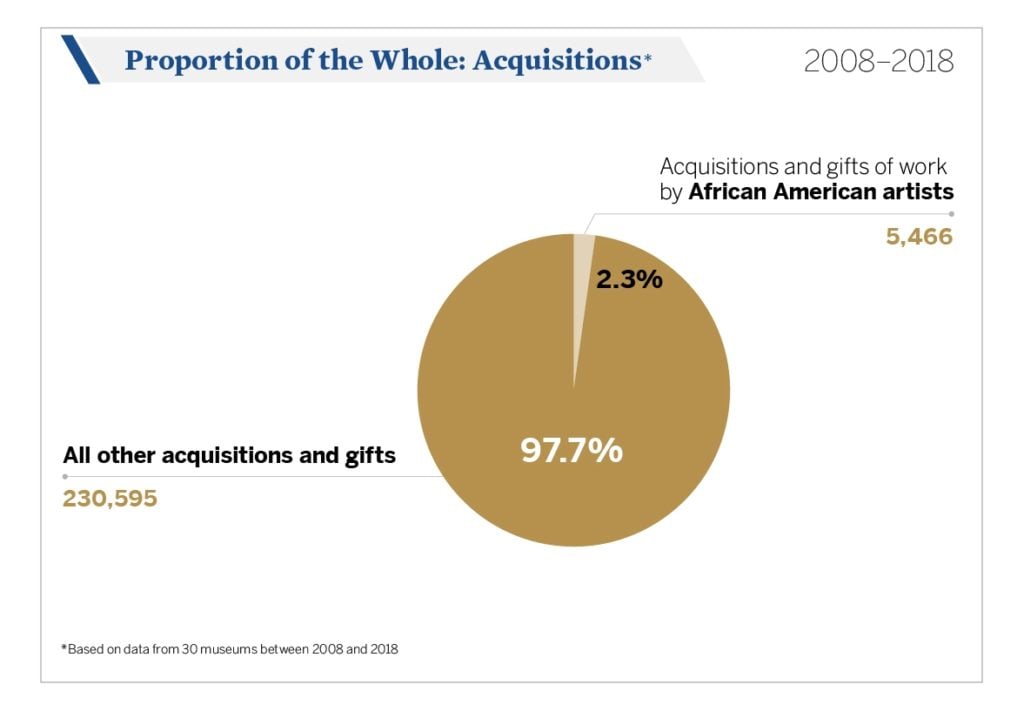
Image courtesy In Other Words at Art Agency, Partners.
Meanwhile, the museums we examined have dedicated only 7.6 percent of all their exhibitions to the work of African American artists. (Notably, New York’s Studio Museum in Harlem accounts for 2.7 percent of that figure.)
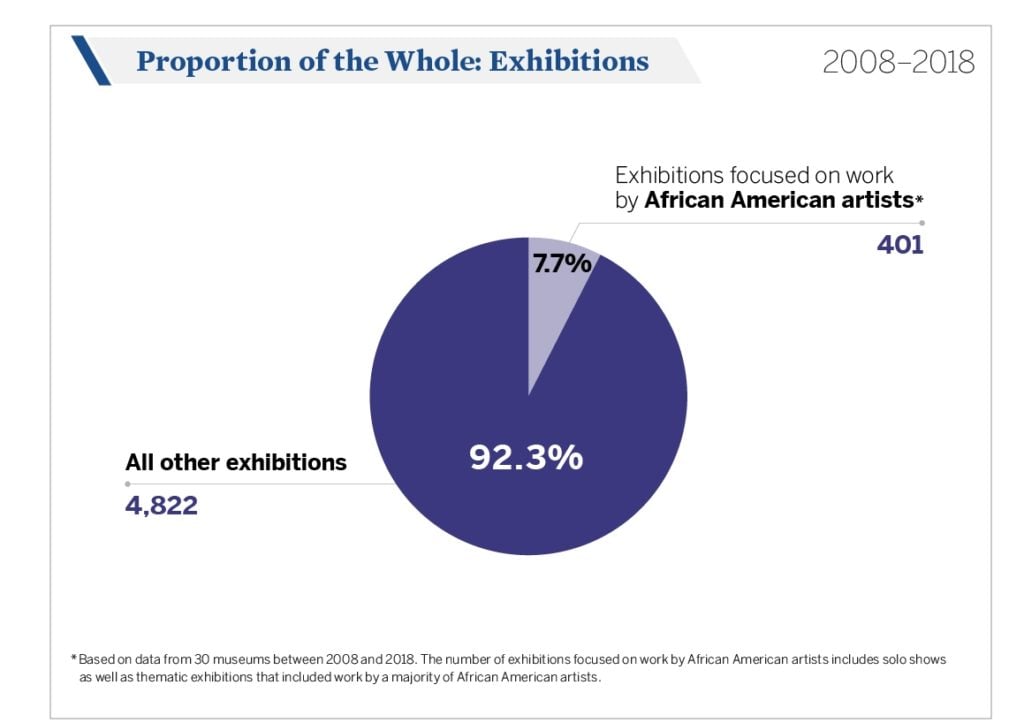
Image courtesy In Other Words at Art Agency, Partners.
“I would have thought the needle would have moved more,” says Margaret Morton, the director of creativity and free expression at the Ford Foundation.
A Moment of Change?
Our research suggests that, despite recent efforts, work by African American artists continues to be sidelined within American museums. The perception of progress is buoyed by a handful of important exhibitions, a—very gently—increasing number of acquisitions, and a smattering of headline auction prices. These, however, belie the extent to which entrenched systems of power and influence contribute to institutional racism that impedes significant structural change.
“Historically, what curators have been asked to do is follow a particular storyline—and then when things fall outside that, they are rendered invisible,” says Naomi Beckwith, a senior curator at the Museum of Contemporary Art, Chicago. But the stories of African American artists “don’t just belong to the bodies that hold the narrative. These stories belong to culture. It is a way of seeing the world.”
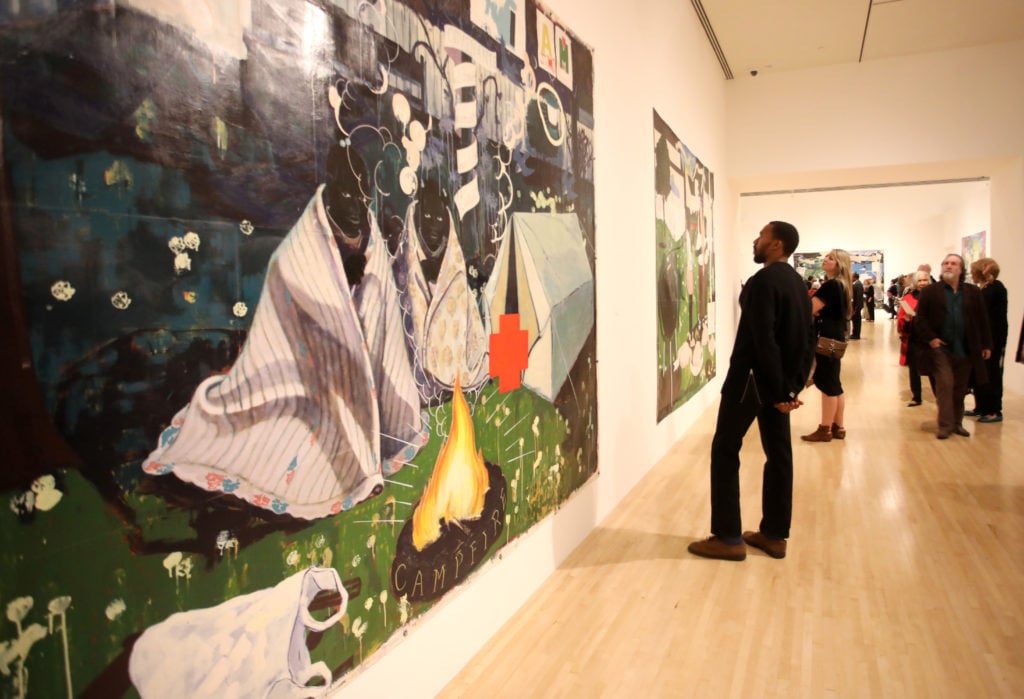
The Opening of “Kerry James Marshall: Mastry” at MOCA in Los Angeles, California. Photo by Rachel Murray/Getty Images for MOCA.
African American artists are certainly not the only population that has been pushed to the margins by major institutions. Several people we spoke to suggested we would be likely to find even starker underrepresentation of other groups, including Native American and Latino artists.
These challenges, of course, are not confined to the art world. “We would similarly ‘be surprised’ by the findings in many other industries that would no doubt show equivalently disproportionate statistics—which just speaks to the vastness of the issue,” says Valentino Carlotti, the global head of business development at Sotheby’s.
Alternate Histories
Make no mistake: African American artists, critics, and historians have long been doing important and influential work out of sight of the mainstream.
“There have been many concurrent art histories that have often been on parallel tracks but rarely aligned,“ says Brooke Davis Anderson, the director of the Pennsylvania Academy of the Fine Arts. The institution has acquired 393 works by African American artists over the past decade—more than almost any other museum. “If you’re not part of the mainstream canon, then your narrative is a community one,” she says. “That doesn’t mean it is less academic and scholarly and smart.”
It is only recently that the country’s largest museums have begun to seriously consider the fact that their collections should better reflect the demographics of their communities. But “historically black colleges and universities have made this a priority for a very long time,” says Andrea Barnwell Brownlee, the director of the Museum of Fine Art at Spelman, the historically black women’s college in Atlanta, Georgia. “They were certainly looking at acquiring this work before major institutions were and so there is a much greater context to their collections.”
The same is true of smaller museums that have made it a priority to support their local constituents. The Columbus Museum in Georgia, for example, was one of the first to acquire major works by Alma Thomas and Amy Sherald, who were both born in the city. (The museum plans to co-organize a major Thomas exhibition in 2020.)
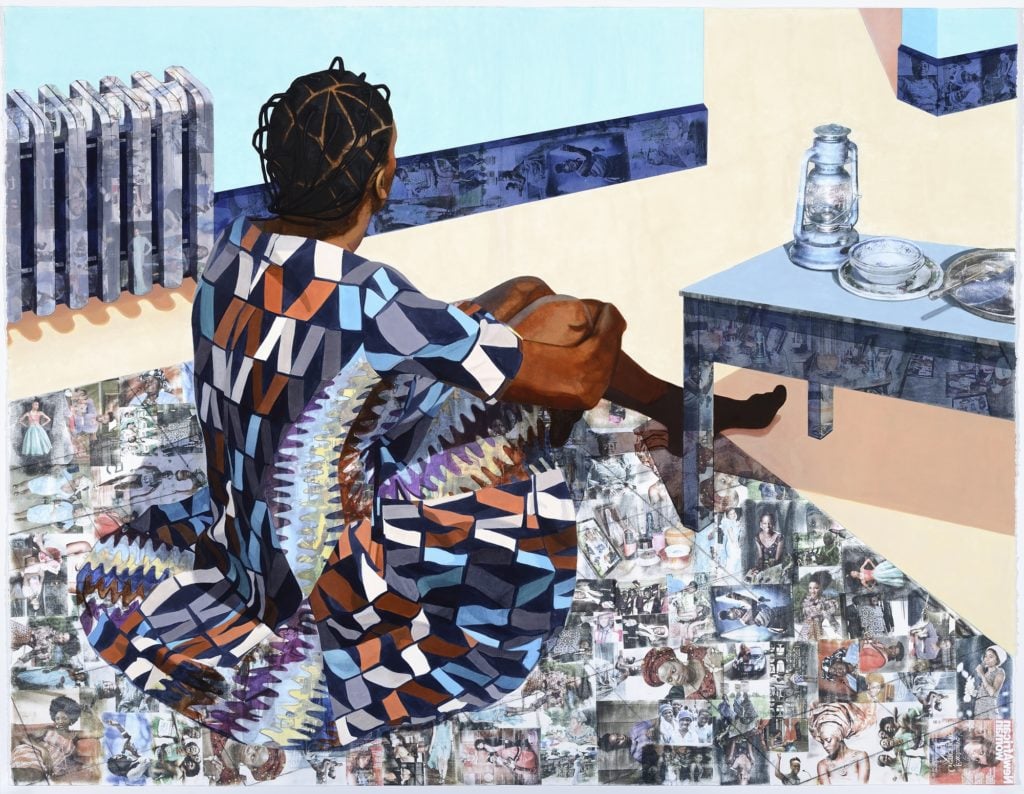
Njideka Akunyili Crosby, “The Beautyful Ones Are Not Yet Born” Might Not Hold True For Much Longer (2013). Courtesy of the Nasher Museum.
Now, access to comparable works is tightly controlled—and far too expensive for most institutions to afford. “We couldn’t consider buying work by Barkley L. Hendricks or Njideka Akunyili Crosby now, but we have wonderful examples of both because we invested early in those artists’ careers,” says Trevor Schoonmaker, the deputy director of curatorial affairs and chief curator of the Nasher Museum of Art at Duke University in North Carolina. New auction records were set this past May at Sotheby’s for work by both Hendricks ($2.2 million for the 1974 painting Brenda P) and Crosby ($3.4 million for the 2017 work Bush Babies).
Of the 628 works to have entered the Nasher’s permanent collection during the past decade, 132 are by African American artists—21 percent of the total. “We couldn’t afford to follow trends, even if we wanted to,” Schoonmaker says.
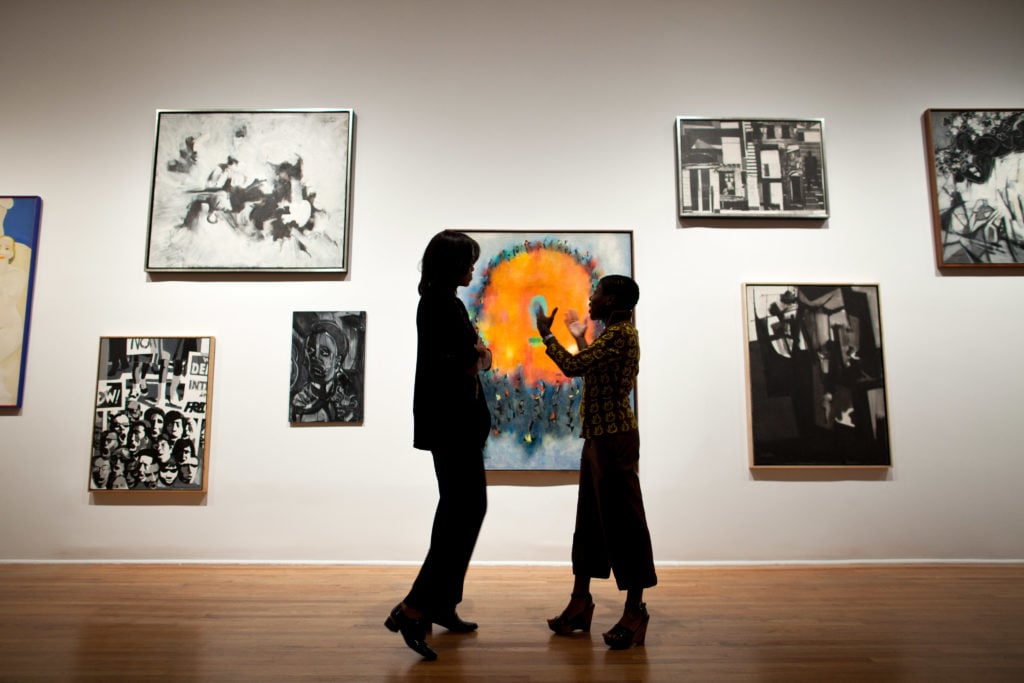
Former first lady Michelle Obama (L) talks with Director and Chief Curator Thelma Golden during a tour of the Studio Museum in Harlem. Photo by Chuck Kennedy/The White House via Getty Images.
What appears to many to be a recent phenomenon is, in fact, the product of decades of dedication by both institutions and individuals. Trailblazing curatorial giants such as Okwui Enwezor, the former artistic director of the Haus der Kunst in Munich, and Thelma Golden, the director and chief curator of the Studio Museum in Harlem, have been making steadfast claim to the excellence of work created by artists of the African diaspora for a long time. “For more than 50 years, we have worked to support the voices of black artists locally, nationally, and internationally through exhibitions, publications, educational programs, and public dialogue,” Golden says.
Meanwhile, many of the country’s oldest museums are playing catch-up—and being honest about it. In a frank admission of institutional fallibility, the Metropolitan Museum of Art in New York posted a wall text to accompany its current exhibition of African American portrait photographs from the 1940s and ‘50s (through October 8). “The museum has until recently acquired few likenesses of African Americans,” the label reads. Acquisitions made between 2015 and 2017 “are part of an initiative, long overdue, to build such a collection.”
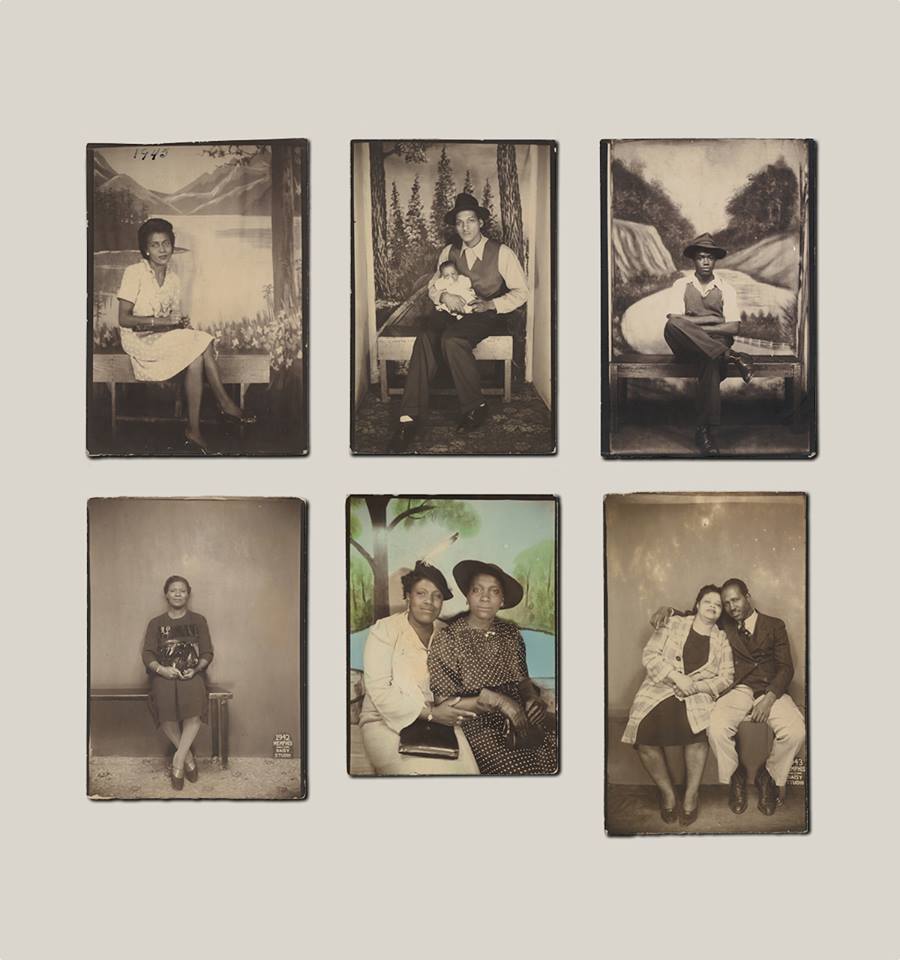
Unknown American photographers and Daisy Studio, Studio Portraits (ca. 1940s–50s). Courtesy of the Metropolitan Museum of Art, New York.
Shifting the Status Quo
To date, larger museums have mainly chosen to lavish resources and attention on a small number of agreed-upon artists, limiting the amount of new scholarship that could reshape the canon. Of the 216 solo exhibitions dedicated to work by African American artists staged during the past decade at the 30 museums we examined, almost a quarter focused on the same 10 names.
“There is no reward system for museums to take chances,” says Maxwell Anderson, the president of the Souls Grown Deep Foundation. “Curators have to sell the exhibition or the acquisition to the board or director. The default is to go to people who are much in the news, much discussed.”
Anderson recalls clashing with certain board members when he was the director of the Whitney Museum over an exhibition of work by African American quilters from Gee’s Bend. One disgruntled board member asked: “‘How many mid-career artists haven’t had shows, and you want to do an exhibition of women quilters from Alabama?'” he recalls. (The works in the 2002 show were ultimately described by New York Times critic Michael Kimmelman as “some of the most miraculous works of modern art America has produced.”)
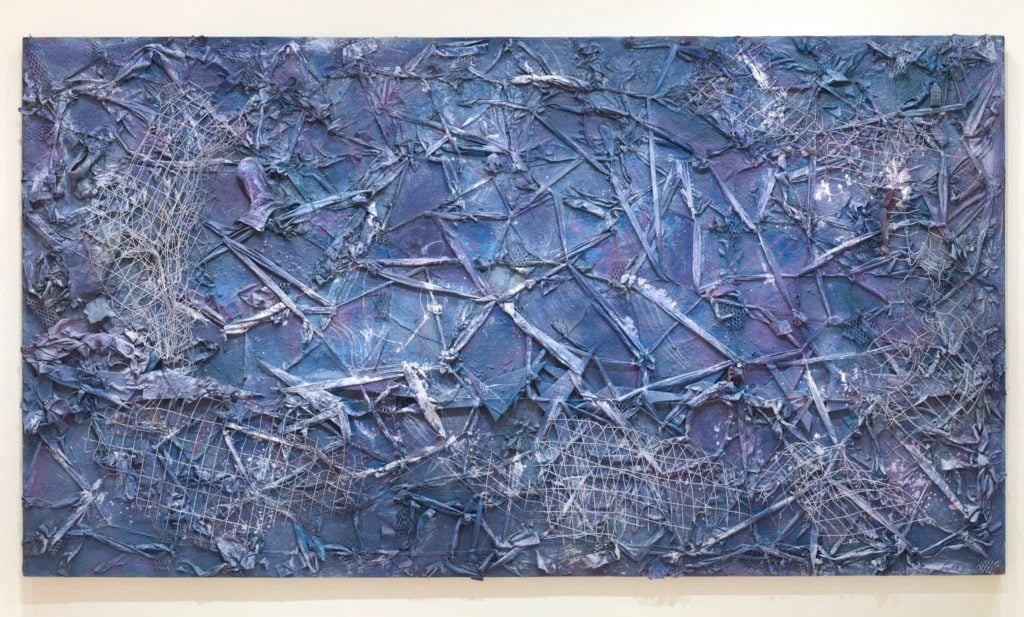
Thornton Dial, Crossing Waters (2006–2011). Courtesy of the High Museum of Art.
As in any field, some power brokers are reluctant to see the status quo change. Despite the reality that most American museums have not significantly adjusted their acquisition and exhibition priorities, there is quiet questioning in some quarters about whether change has, in fact, gone too far.
This is nothing new. In her studies of demographic representation in museums and galleries in the 1980s and ‘90s, the artist Howardena Pindell—who was one of the first black curators at MoMA—wrote in 1987: “The art world will state that all white exhibitions, year after year… are not a reflection of racism. The lie or denial is cloaked in phrases such as ‘artistic choice’ or ‘artistic quality’ when the pattern reveals a different intent.”
Others express their concerns more explicitly. One museum director, speaking anonymously, tells us that a board member recently took him aside to sound a note of caution: “Just don’t forget about the white guys.”
What’s Taken So Long?
Without institutional buy-in, progress can be slow. “It’s not an easy thing—you have to really want it,” says Melissa Chiu, the director of the Hirshhorn Museum and Sculpture Garden in Washington, DC, which has staged three exhibitions and acquired nine works by African American artists since 2008.
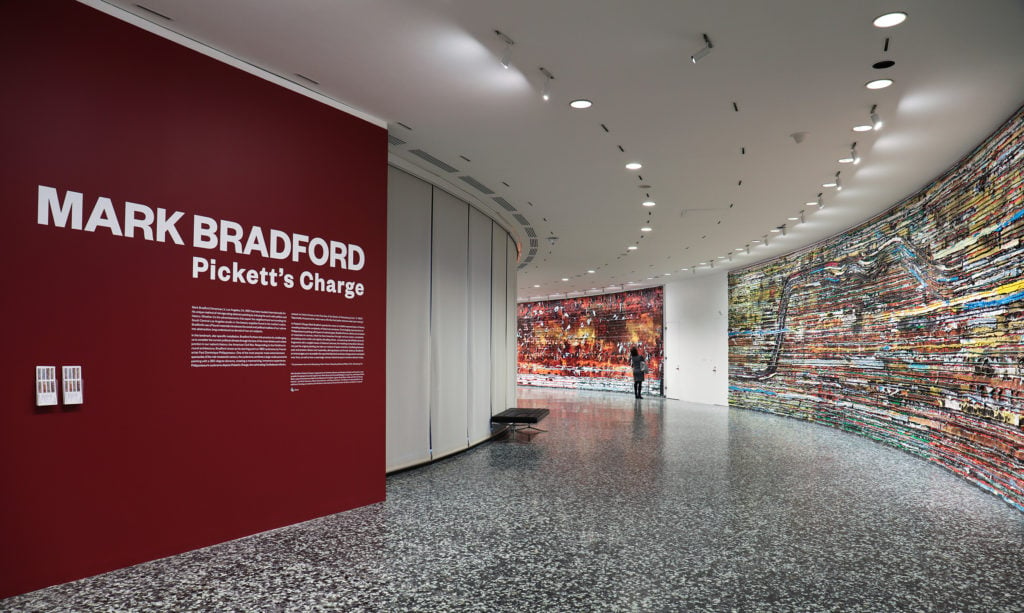
Installation view of “Mark Bradford: Pickett’s Charge” at the Hirshhorn Museum and Sculpture Garden. Photo: Cathy Carver. Courtesy of the artist and Hauser & Wirth.
Acquisitions and exhibitions require expertise and resources that museums are constantly under pressure to invest elsewhere. Several museum directors told us off the record that their institutions are struggling to gain ground on the many fronts on which they have lagged behind. “It took years for us to have as many women artists on our schedule,” says one prominent director. “Now you’re seeing the fruits of that. This all takes time.”
Not Just a Matter of Getting People in the Room
There have been episodic efforts to alter the balance of power in institutions before. In the late 1980s and early ‘90s, the multiculturalism movement put pressure on museums to diversify both their personnel and their programs.
But these efforts fizzled out as dedicated funding dried up, museums shifted their priorities, and some institutions faced acute blowback in response to exhibitions like the 1993 Whitney Biennial. That controversial survey, which became known as the “identity politics biennial,” included George Holliday’s 10-minute video of the Rodney King beating as a work of art and dispensed admission buttons designed by the artist Daniel J. Martinez that read, “I can’t imagine ever wanting to be white.” Critic Robert Hughes declared it “a fiesta of whining.” Kimmelman wrote, more simply, “I hate the show.”
In the aftermath, optimism quickly fractured as “political correctness became a kind of buzzword,” says Bridget Cooks, a professor of African American studies and art history at the University of California, Irvine. “There had been a blossoming of visibility and then this became a way to handle it, wrap it up, and shut it down. There was a sense that ‘this is no longer art.’ It further polarized people in terms of next steps.”
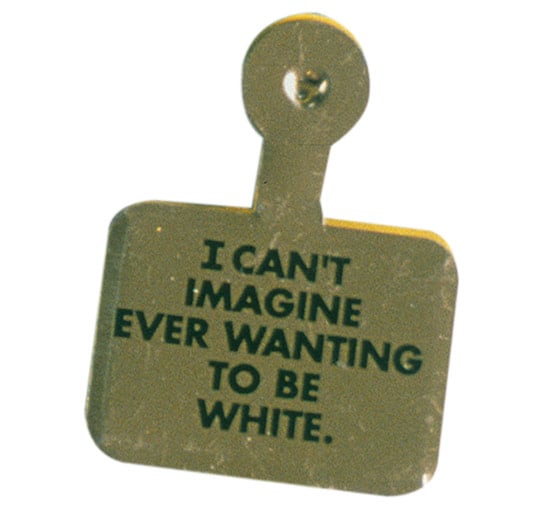
Daniel Joseph Martinez created these entry badges for the Whitney Museum of American Art’s 1993 biennial exhibition. Photo courtesy the artist and Simon Preston Gallery, New York.
The earlier efforts to increase diversity were “naive,” Naomi Beckwith says. “There was this idea that if we all come together in a melting pot, it will naturally create an egalitarian society. But people can’t just appear; they need to be given power.”
Today, only 16 percent of leadership positions in art museums are held by people of color and only four percent of museum curators are African American, according to a 2015 study by the Andrew W. Mellon Foundation.
Since then, several initiatives have formed to try to tip the scales. In 2015, a grant from the Mellon Foundation helped establish a curatorial studies program at Spelman College. Last year, the Ford Foundation and the Walton Family Foundation pledged to spend $6 million over three years to diversify management at US museums. And this year, the Souls Grown Deep Foundation and the Association of Art Museum Directors both announced plans to sponsor paid museum internships for undergraduate art history students of color.
What’s Different Now?
Issues of equity in the art world can never be entirely extricated from the broader social context, says Jeff Chang, the author of Who We Be: The Colorization of America. Museum acquisitions of work by African American artists jumped 63 percent in 2015, the year after Black Lives Matter demonstrations swept the country. And the number of exhibitions, which often take two to three years to complete, increased 70 percent between 2014 and 2017.
Nevertheless, a palpable feeling of unease remains among many of the people we spoke to, who fear that the pendulum could swing back in the other direction, just as it has in the past. “We’re still moving though this particular era with such a huge lack of equity that we have to depend on the goodness of white folks to see these changes being made,” Chang says. “What happens when there is a backlash? That is the story of the 1990s.”
Museums are trying different methods to safeguard against this. The Virginia Museum of Fine Arts, for example, made its desire to become a leader in the field of African American art a prominent part of its strategic plan in 2015. During the past decade, the museum has acquired more than 350 works by African American artists. “Our ambition around African American art is nothing short of the very top,” says Alex Nyerges, the museum’s director.
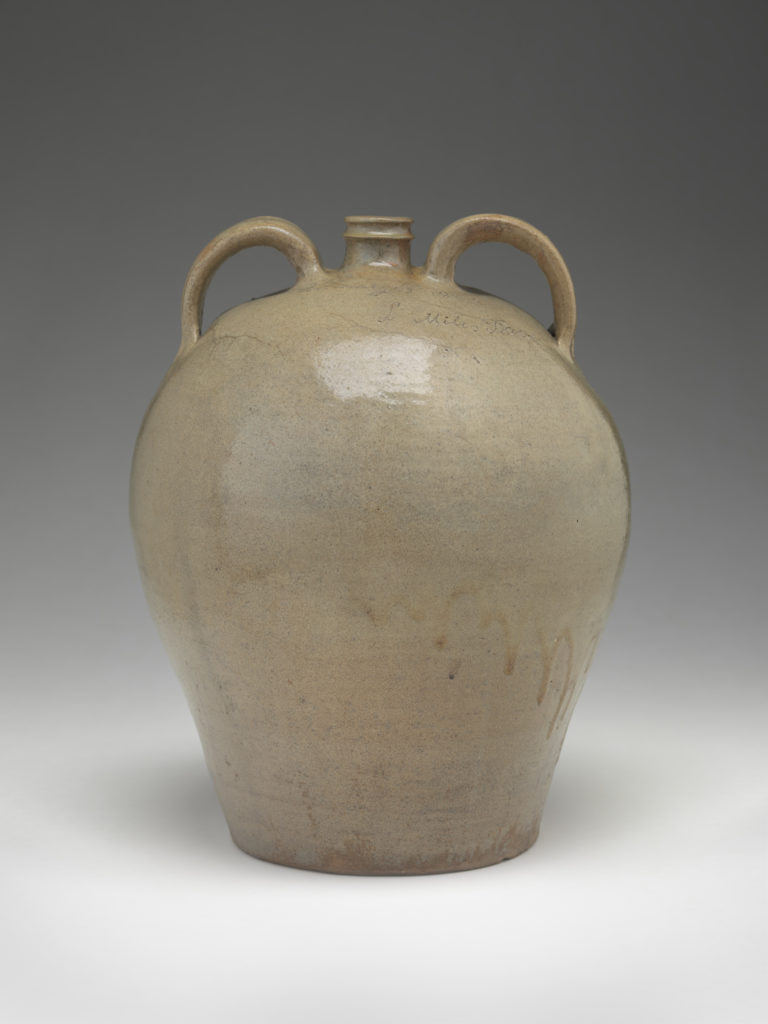
David Drake, Two-Handled Jug (1840). Courtesy of the Virginia Museum of Fine Arts.
And last month, after two years of planning, the Cleveland Museum of Art in Ohio—which has acquired 73 works by African American artists during the past decade—launched its first diversity, equity, and inclusion plan. The program will inform how the museum trains employees, hires vendors, and collects art.
Other museums are considering more radical methods. The Baltimore Museum of Art’s director Christopher Bedford recently oversaw the controversial sale of seven works by white male artists from the institution’s collection to create an acquisitions fund dedicated to contemporary work by women and artists of color. He now plans to “put in place provisions,” as donors have done historically by placing conditions on gifts, “to make it impossible for those inroads to be undone.”
At the same time, new paths are also being forged through scholarship: the Getty Research Institute will soon announce its plans to launch an African American art history initiative. Collector Pamela Joyner, who commissions academics and curators to write about her 400-strong collection of work by primarily African American artists, notes that scholarship is key to “make sure that what we are experiencing isn’t some kind of cyclical blip.”
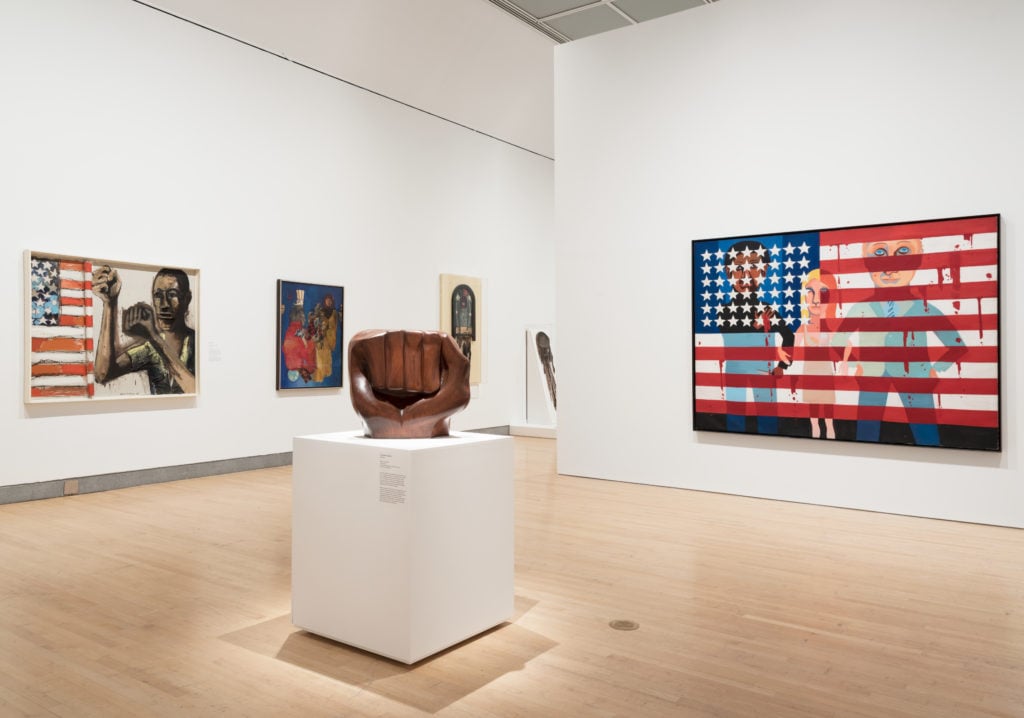
Installation view, “Soul of a Nation: Art in the Age of Black Power” at the Brooklyn Museum. Photo: Jonathan Dorado, Brooklyn Museum.
The hope, of course, is that these efforts will ensure that future generations study a much broader, more inclusive, and richer art history than their predecessors. As the Tate curator Zoe Whitley, who co-organized the “Soul of a Nation” exhibition, noted in a recent In Other Words podcast: “Romare Bearden was asked in a 1972 interview how he would define black art, and he said that black art is the art that black artists do.
“If someone were to say: ‘What is white art?’ you might say the Italian Renaissance, but you could equally say the German Renaissance, Rembrandt or English painting. Black art is as varied as that.”
Additional research by Chelsea Perkins and Dylan Sherman.
This story is part of a research project on the presence of work by African American artists in museums and the market over the past decade. For more, see our examination of the market; three case studies on artists from three different generations; visualizations of our findings; and our methodology.
